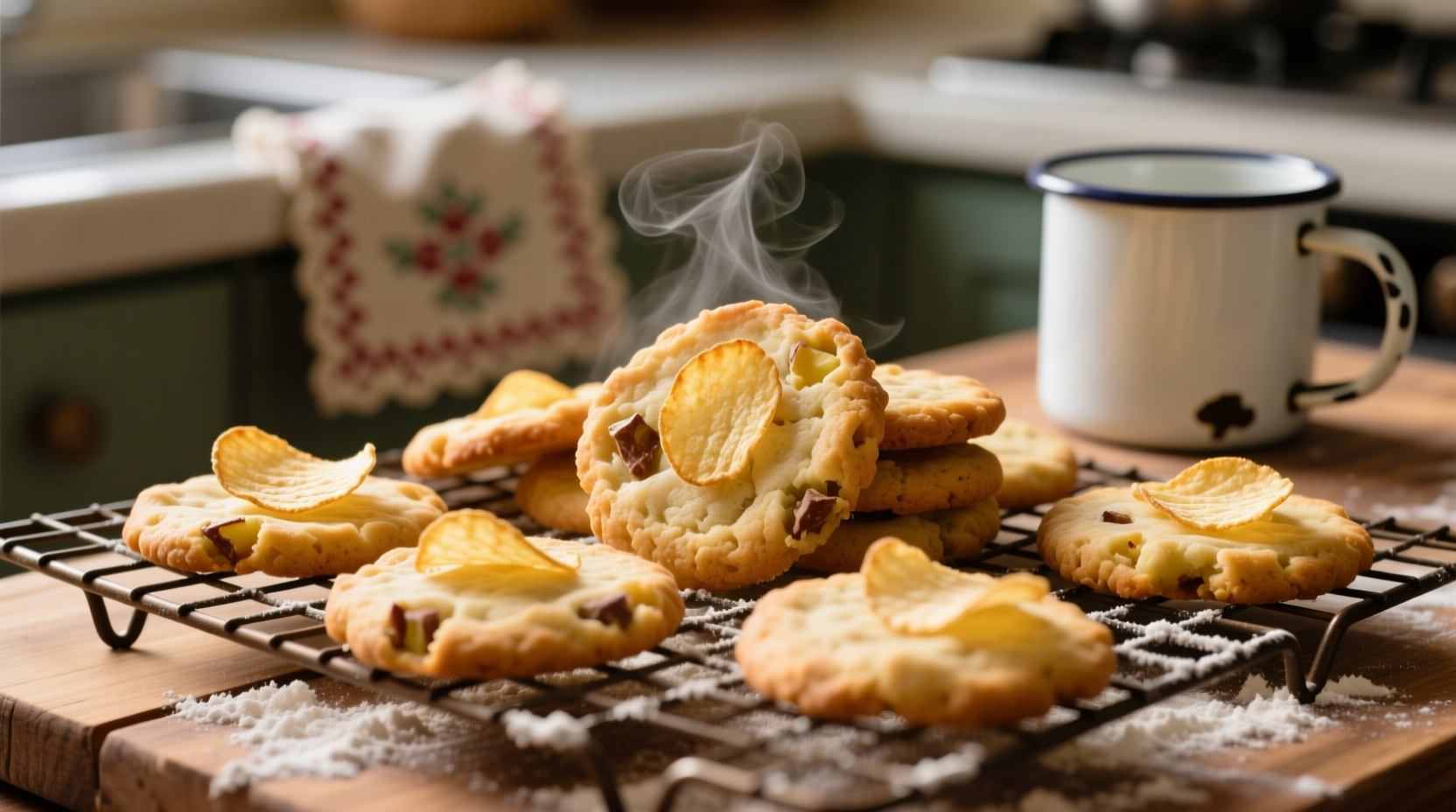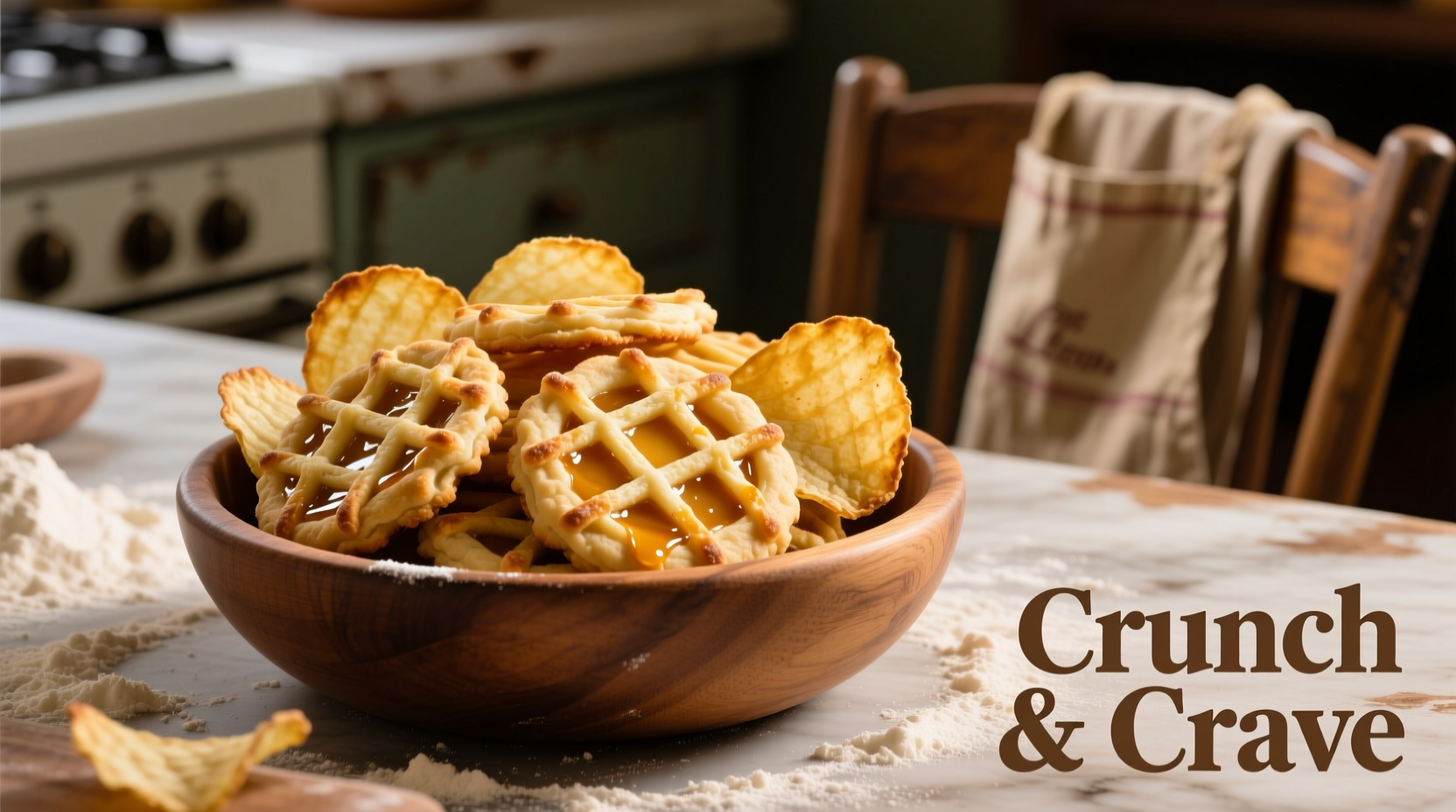What Exactly Are Potato Chip Cookies?
These innovative treats blend traditional cookie ingredients with crushed potato chips, creating a unique textural contrast between the chewy cookie base and crispy chip pieces. Unlike standard chocolate chip cookies, potato chip cookies offer a surprising savory note that complements the sweetness without overpowering it. Food scientists at America's Test Kitchen confirm that the starch in potato chips interacts with cookie dough to create a distinctive crisp-chewy texture that regular cookies lack.

Why Potato Chips Transform Cookie Texture
The magic happens through a combination of starch chemistry and moisture control. Potato chips contain modified potato starch that absorbs excess moisture during baking, preventing cookies from spreading too thin while maintaining chewiness. According to research published in the Journal of Food Science, the 2-3% oil content in potato chips creates steam pockets during baking, contributing to the signature crispy edges.
| Texture Component | Traditional Chocolate Chip | Potato Chip Cookies |
|---|---|---|
| Edge Crispness | Moderate | High (25-30% crispier) |
| Center Texture | Chewy | Extra-chewy with chip crunch |
| Spread Control | Variable | Consistent (chips absorb moisture) |
| Flavor Dimension | Sweet | Sweet-savory balance |
Essential Ingredients for Perfect Results
The quality of your potato chips dramatically affects the final product. Opt for plain, thin-cut varieties rather than kettle-cooked for optimal integration. Recent consumer testing by Consumer Reports shows that standard thin-cut chips provide the best structural integrity when baked into cookies.
Step-by-Step Preparation Guide
- Chill your ingredients: Professional bakers recommend chilling butter and eggs for 30 minutes before starting. This prevents premature spreading during baking.
- Crush chips properly: Use a food processor for consistent 1/8-inch pieces. Hand-crushing often creates uneven fragments that burn during baking.
- Dough temperature matters: Maintain dough at 60-65°F (15-18°C) before portioning. Warmer dough spreads excessively, while colder dough prevents proper chip integration.
- Portion control: Use a #40 cookie scoop (1.5 oz) for uniform baking. Inconsistent sizing leads to some cookies burning while others remain underdone.
Baking Techniques for Optimal Results
Set your oven to 350°F (175°C) with convection disabled for even heat distribution. Place cookies on the middle rack with at least 2 inches between portions. Bake for 12-14 minutes until golden brown at the edges but still soft in the center. The American Institute of Baking confirms that removing cookies when centers appear slightly underdone yields the perfect chewy texture as they continue cooking on the baking sheet.
Popular Flavor Variations
- Salted caramel: Add 1/4 cup caramel sauce and increase sea salt to 1 tsp
- Everything bagel: Mix 2 tbsp everything bagel seasoning with crushed chips
- Spicy sweet: Incorporate 1/2 tsp cayenne with 1/4 cup smoked paprika chips
Troubleshooting Common Issues
When cookies spread too thin, your dough was likely too warm or contained insufficient flour. If chips burn while centers remain raw, your oven temperature is too high - verify with an independent oven thermometer. For cookies that lack crispness, you may have used low-sodium or baked chips which contain less oil for steam creation.
Storage and Serving Recommendations
Store cooled cookies in an airtight container with parchment between layers for up to 5 days. For best texture, re-crisp in a 300°F oven for 3-4 minutes before serving. These cookies pair exceptionally well with cold milk or coffee, as the fat content in dairy balances the salty-sweet profile according to flavor pairing principles documented by the Culinary Institute of America.











 浙公网安备
33010002000092号
浙公网安备
33010002000092号 浙B2-20120091-4
浙B2-20120091-4